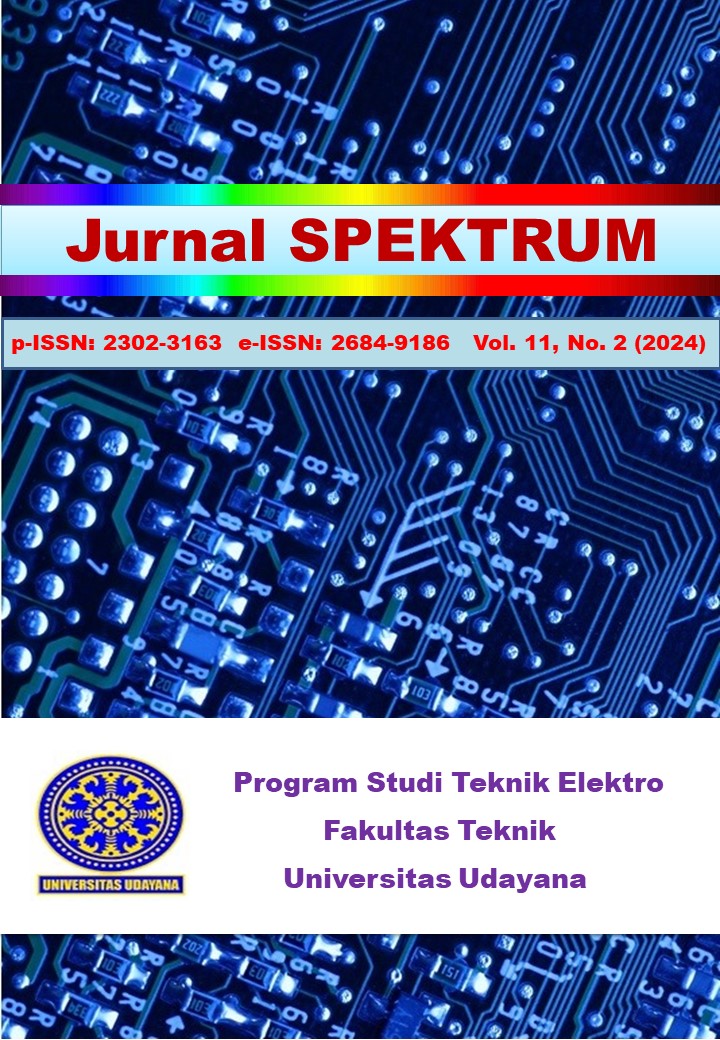EARLY WARNING SYSTEM PELEPASAN BEBAN PADA PENYIMPANAN ENERGI GEDUNG DH TEKNIK ELEKTRO
Abstract
The aim of this research is to produce a prototype of an Early Warning System (EWS) for load shedding in energy storage based on ESP32. The load shedding system functions as a load manager to ensure that VIP load classes can be supplied for a longer duration. This load shedding system uses a control system from ATmega 328. The load shedding system utilizes the voltage level read on the battery, allowing it to classify loads according to their importance levels. The load classes are divided into four levels: VIP load class, first-class load, second-class load, and third-class load. The Early Warning System (EWS) is used to provide notifications stored on the battery. ATmega 328 will send battery voltage data to ESP32, which will then be sent through the Telegram application. The performance of the EWS in the load shedding system is reviewed in terms of its effectiveness. The object of this research is the automatic sending of load shedding warnings. Data on battery percentage was taken 20 times. When the battery voltage is 5% above the load class cutoff percentage, ATmega328 will send battery voltage data to ESP32. In the experimental results, it was found that when the percentages show 80%, 75%, 55%, 50%, 30%, 25%, and 5%, the EWS works by sending messages to users about which load class will soon be cut off.
Downloads

This work is licensed under a Creative Commons Attribution 4.0 International License.



